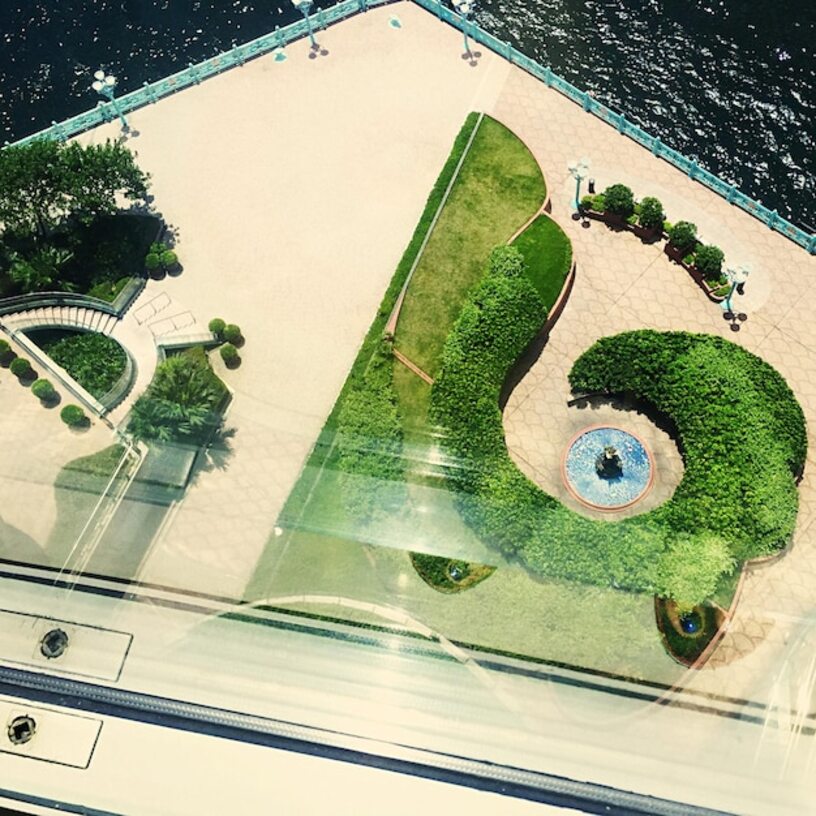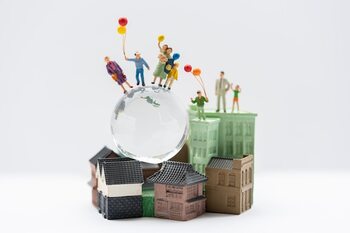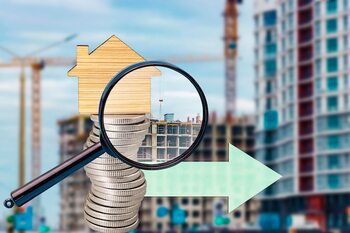The influence of urban design on property valuation

Urban design planning not only transforms the landscape of our cities but also plays a crucial role in property valuation. In a world where location is key, understanding how nearby services and infrastructure affect property value becomes essential for potential buyers and investors. This article will explore the dynamics between urban design and appreciation, revealing how a well-designed community can be the key to growing your investment.
The connection between urban design and quality of life
The connection between urban design and quality of life is undeniable, as a well-planned environment not only enhances the aesthetics of a city but also directly influences the well-being of its inhabitants. Accessible public spaces, well-distributed green areas, and efficient transportation infrastructure are elements that foster social interaction and promote healthy lifestyles. When citizens enjoy an attractive and functional environment, their overall satisfaction increases, which in turn can elevate the demand for properties in those areas. This establishes a direct link between urban design and the perception of property value.
Additionally, the quality of life generated by good urban design can translate into greater economic stability for communities. Cities that offer essential services such as quality schools, health centers, and recreational options tend to attract families and investors. A neighborhood with these characteristics not only becomes more desirable to live in but also maintains its relevance in terms of long-term real estate appreciation. In this sense, those who invest in properties within well-designed communities are more likely to see a positive return on their investment due to the constant increase in demand driven by the pursuit of housing quality.
2. Nearby services: what are buyers looking for?
Property buyers are increasingly interested in the proximity of essential services such as schools, hospitals, supermarkets, and recreational areas. These elements not only provide convenience and accessibility for families but also reflect the quality of life in a community. A neighborhood with good educational and healthcare options tends to be more attractive to potential homeowners, which can increase its market value. Thus, nearby services become a decisive factor for those looking to settle in a new area.
In addition to basic services, the presence of cultural and recreational facilities, such as museums, theaters, or parks, can significantly influence the purchasing decision. Well-designed public spaces encourage social interaction and promote an active and healthy lifestyle, characteristics that many buyers greatly value. The integration of these components within urban design not only enhances the aesthetic appeal of the place but also helps to forge a sense of community. Therefore, when evaluating a property, it is essential to consider how well it is connected to these vital resources that enrich the daily experience of the resident.
3. Impact of public transportation on property valuation
Public transportation is a determining factor in property valuation, as it facilitates access to various areas of a city and improves the quality of life for its residents. Properties near subway stations, bus stops, or trams tend to be more attractive to buyers and renters, as they provide a convenient alternative to car use. This accessibility not only reduces travel time and costs but also promotes a more sustainable lifestyle. As a result, areas well-connected by public transportation often experience an increase in demand, leading to a rise in real estate prices.
Additionally, the efficient design of the public transportation system can influence overall urban planning and its perception among potential investors. Communities with well-integrated transportation networks tend to attract residential and commercial developments, creating a dynamic environment that fosters investment. Urban plans that prioritize public transportation not only improve urban mobility but can also reduce traffic congestion and pollution, thus increasing the neighborhood's appeal. In this sense, investing in properties located near good transportation connections can be a smart strategy to maximize long-term appreciation.
4. Green spaces and their effect on real estate value
Green spaces are a fundamental element in urban design that not only beautifies the environment but also has a significant impact on real estate value. Studies have shown that proximity to parks, gardens, and recreational areas can increase the appeal of a property, attracting potential buyers who value quality of life and opportunities for outdoor activities. These spaces provide a respite from urban hustle, creating a healthier and more pleasant living environment, which is highly valued in the real estate market.
Additionally, green spaces foster a sense of community and social cohesion, aspects that are increasingly valued by those looking to settle in a new area. The presence of landscaped areas can enhance not only the aesthetics of the neighborhood but also its safety and accessibility. As a result, properties located near these spaces tend to experience a faster appreciation in their long-term value. Therefore, investing in areas with well-planned green spaces translates not only into visual and environmental benefits but also into a solid financial strategy for those looking to maximize their real estate investment.
5. The importance of commercial planning in residential areas
Commercial planning in residential areas is a fundamental aspect that is often overlooked when considering urban design. A well-thought-out approach to the distribution of shops, services, and recreational spaces not only improves the quality of life for residents but also increases the attractiveness of new investments. When commercial areas are properly integrated with residences, an ecosystem is created where inhabitants have access to what they need without long commutes, thus enhancing the neighborhood's appeal and increasing its value.
Additionally, proper commercial planning can foster a sense of community and belonging among residents. By having local shops, cafes, and community spaces within a residential area, social interaction and the development of interpersonal relationships are promoted. This not only contributes to the emotional well-being of the inhabitants but also makes the property more desirable for future buyers. In this context, a vibrant and active community can lead to a significant increase in long-term real estate value.
6. Inclusive urban design: economic and social benefits
Inclusive urban design not only promotes social equity but also has a significant impact on the economic development of a community. By creating accessible and welcoming spaces for all citizens, it encourages the participation of diverse populations, which in turn can increase commercial activity and attract investments. Areas that integrate parks, public squares, and efficient transportation often become meeting points where local businesses thrive and job opportunities are generated. This economic growth can lead to an increase in demand for properties in those areas, raising their value.
Additionally, inclusive urban design contributes to improving the quality of life of its inhabitants, which is a key factor for buyers and investors. Communities with well-designed public spaces and accessible services tend to create a sense of belonging and social cohesion among their residents. This positive environment not only attracts new tenants and potential homeowners but also helps maintain the stability of the real estate market by reducing vacancy rates. Ultimately, these characteristics make properties in areas with an inclusive focus more desirable, thereby justifying their appreciation over time.
7. Current trends in urban planning and their impact on the real estate market
Current trends in urbanism, such as the development of accessible and sustainable public spaces, are transforming how cities are organized and function. These initiatives not only aim to improve the quality of life for residents by promoting a more active and community-oriented lifestyle but also increase the appeal of nearby properties. The integration of green areas, pedestrian paths, and bike lanes helps create more livable and pleasant urban environments, resulting in greater demand for housing in those areas. This shift towards a more human and ecological urbanism is essential for attracting the attention of both buyers and investors.
The impact on the real estate market is evident: properties located in areas that have adopted these trends tend to experience significant appreciation. Developers and investors are increasingly aware of the importance of urban design in their projects, opting to collaborate with architects and urban planners to create integrated communities that offer not only residences but also essential services within walking distance. This strategy not only adds immediate value to the properties but also ensures their long-term relevance in the face of a dynamic and changing market. Ultimately, the contemporary approach to urbanism is redefining what it means to live well in the city and how this positively impacts real estate investments.
8. Successful cases of urban revitalization and increased property value
Urban revitalization has proven to be a significant driver of change in various cities around the world. An emblematic example is the transformed industrial area of High Line in New York, where an old elevated railway was converted into a vibrant linear park that connects neighborhoods and enhances the quality of life. This intervention not only beautified the urban landscape but also attracted developers and businesses, resulting in a substantial increase in property values in the surrounding areas. The creation of public spaces and green areas has generated new appeal for both residents and tourists, turning this section of the city into a desirable destination.
Another notable case is found in the La Latina neighborhood in Madrid, where rehabilitation projects have revitalized historic buildings and improved local infrastructure, including public transport and commercial services. These improvements have significantly boosted land and property values, attracting young professionals and families looking to reside in an area with cultural and social character. Additionally, community initiatives have fostered a sense of belonging among residents, which not only increases demand for properties in this area but also creates a more cohesive and sustainable community. In both examples, it is clear that investing in urban design can transform not only physical spaces but also the local economy by increasing real estate valuation.
9. How to assess the appreciation potential when buying a property
Evaluating the potential for value appreciation when purchasing a property involves a detailed analysis of various factors related to urban design. First, it's essential to consider the geographical location and its accessibility to basic services such as schools, hospitals, shopping centers, and public transportation. A well-connected environment not only facilitates the daily lives of residents but also attracts future buyers and tenants, thereby increasing demand and property value. Additionally, observing how surrounding areas are developing can provide insights into future infrastructure investments that could further elevate property prices in the area.
Another key aspect to evaluate is the aesthetic and functional design of the neighborhood. Communities that incorporate green spaces, parks, recreational areas, and pedestrian pathways tend to be more attractive to buyers. It is also important to research the urban planning initiatives in the area; projected changes in zoning or significant developments can have a substantial impact on future valuation. By conducting a thorough assessment of these elements, buyers can make informed decisions that not only ensure a good initial purchase but also enhance their long-term investment within the dynamic context of urban design.



